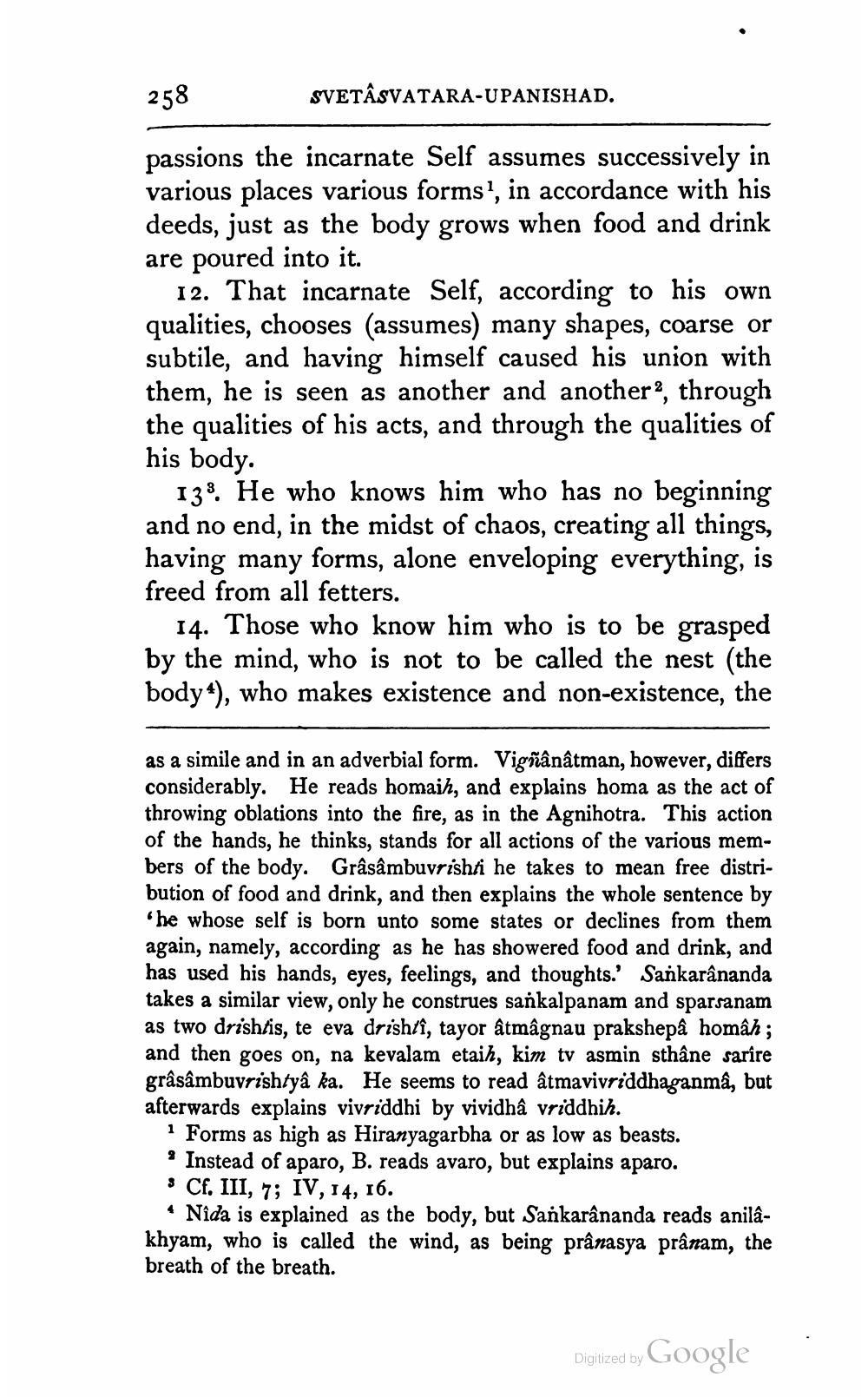________________
258
SVETÂSVATARA-UPANISHAD.
passions the incarnate Self assumes successively in various places various forms?, in accordance with his deeds, just as the body grows when food and drink are poured into it.
12. That incarnate Self, according to his own qualities, chooses (assumes) many shapes, coarse or subtile, and having himself caused his union with them, he is seen as another and another, through the qualities of his acts, and through the qualities of his body.
138. He who knows him who has no beginning and no end, in the midst of chaos, creating all things, having many forms, alone enveloping everything, is freed from all fetters.
14. Those who know him who is to be grasped by the mind, who is not to be called the nest (the body), who makes existence and non-existence, the
as a simile and in an adverbial form. Vigñânâtman, however, differs considerably. He reads homaih, and explains homa as the act of throwing oblations into the fire, as in the Agnihotra. This action of the hands, he thinks, stands for all actions of the various members of the body. Grâsâmbuvrishti he takes to mean free distribution of food and drink, and then explains the whole sentence by
he whose self is born unto some states or declines from them again, namely, according as he has showered food and drink, and has used his hands, eyes, feelings, and thoughts.' Sankarananda takes a similar view, only he construes sankalpanam and sparsanam as two drishtis, te eva drishtî, tayor atmâgnau prakshepâ homâh; and then goes on, na kevalam etaih, kim tv asmin sthâne sarire grâsâmbuvrishtyâ ka. He seems to read âtmavivriddhaganma, but afterwards explains vivriddhi by vividhâ vriddhih.
* Forms as high as Hiranyagarbha or as low as beasts. * Instead of aparo, B. reads avaro, but explains aparo. : Cf. III, 7; IV, 14, 16.
• Nîda is explained as the body, but Sankarananda reads anilakhyam, who is called the wind, as being prânasya prânam, the breath of the breath.
Digitized by
Digitized by Google




